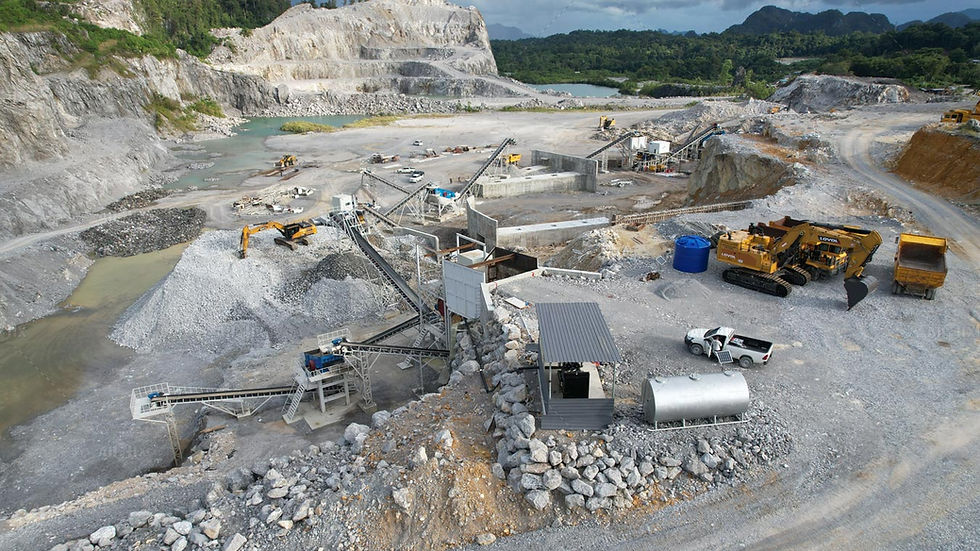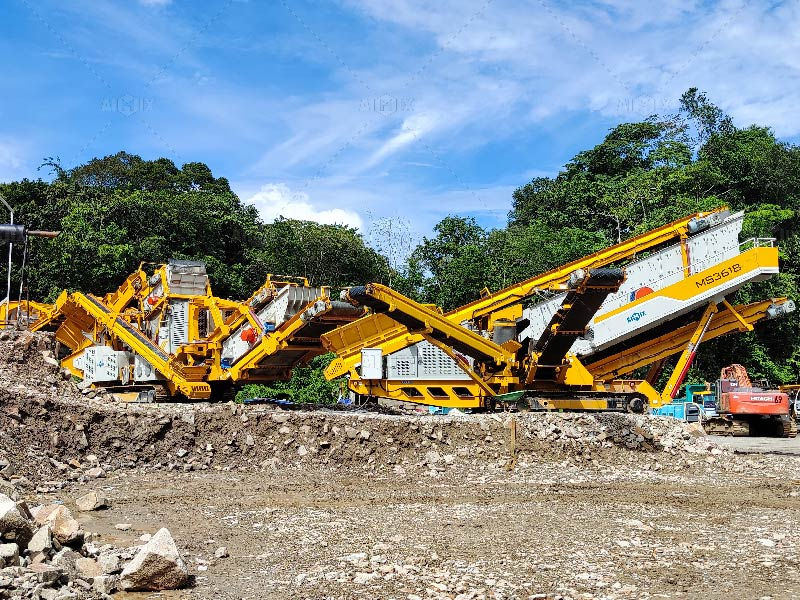ROI Analysis: The Real Profit Cycle of an Aggregate Crushing Plant
- info515452
- 7月10日
- 讀畢需時 4 分鐘
In the rapidly evolving construction and mining sectors, aggregate production plays a crucial role in supplying materials for roads, buildings, and infrastructure. As demand for high-quality aggregates continues to rise, investing in an aggregate crusher plant has become a strategic decision for many contractors and quarry operators. However, the true profitability of such a plant lies in a deeper understanding of the return on investment (ROI) cycle — from initial setup to long-term output and operating costs.
This article explores the real profit cycle of an aggregate crushing plant(planta trituradora de agregados), shedding light on cost structures, production dynamics, and investment recovery strategies. Whether you're considering a stationary stone crusher plant or a mobile stone crusher, this analysis will help you better understand the financial outlook.

The Initial Investment: What Does It Really Cost?
When evaluating the ROI of a crushing plant, the first step is understanding the total initial investment. This typically includes the cost of purchasing or leasing land, acquiring machinery (crushers, screens, conveyors, feeders), setting up infrastructure like power, water, and roads, and hiring skilled labor.
For a mobile stone crusher(trituradora movil de piedra), the capital requirement may be lower due to reduced civil works and quicker installation, making it a popular choice for startups and short-term projects. On the other hand, a stationary stone crusher plant offers long-term scalability and is often better suited for high-volume, continuous production.
Other initial costs may include permits, environmental assessments, and safety compliance — all of which can vary significantly based on location and local regulations.
Production Output and Revenue Generation
Throughput Capacity and Market Demand
The core revenue of any aggregate crusher plant comes from its ability to produce and sell crushed materials. Plants are typically measured by tons per hour (TPH) capacity, and their profitability is directly tied to consistent output and market pricing.
If demand for crushed stone, gravel, or sand is high — as is the case in many Latin American and Southeast Asian markets — even a medium-capacity plant can generate strong revenue. Profit margins improve significantly when the plant is located close to consumption centers, reducing transportation costs.
Product Mix and Value Addition
Different aggregate sizes and quality grades command different prices. Plants that can produce a wide range of products — from fine sand to coarse base material — enjoy greater market flexibility. Some advanced crushing plants include screening and washing systems to produce high-quality, dust-free materials for premium applications like concrete or asphalt production.
This value addition increases revenue per ton and shortens the ROI cycle, especially when working with infrastructure or government projects that require strict material specifications.
Operating Costs: Controlling the Profit Leaks
Fuel and Power Consumption
Energy use is one of the most significant operating expenses. A mobile stone crusher may consume more fuel during relocations but can offset that with savings on material transport. Electric-powered stationary plants are often more efficient in the long term but require reliable grid access or generator systems.
Using energy-efficient motors, optimizing crushing sequences, and maintaining proper machine calibration can significantly reduce daily consumption.
Maintenance and Wear Parts
Crushers, screens, and conveyors experience significant wear due to the abrasive nature of stone. Regular maintenance and timely replacement of parts such as jaw plates, liners, and belts are essential to avoid unplanned downtime.
Well-maintained plants not only last longer but also reduce repair costs and improve uptime — both of which are critical for maximizing ROI.
Labor and Automation
Labor costs vary by region, but automation can play a significant role in improving cost efficiency. Modern aggregate crusher plants often include centralized control systems, real-time monitoring, and auto-lubrication, which reduce the need for manual intervention and improve plant performance.
Break-Even Point and Profit Timeline
How Soon Can You Recover Your Investment?
On average, the break-even period for a well-managed stone crusher plant(planta trituradora de piedra en venta) ranges from 1 to 3 years, depending on capacity, material demand, and operational efficiency. Plants located near high-demand urban zones or infrastructure projects can recover investment more quickly.
Smaller mobile stone crushers may see a return even sooner, especially when deployed for short-term, high-value contracts.
Strategies to Accelerate ROI
Choose a flexible plant configuration to switch between materials and output sizes.
Establish contracts with local construction firms or municipalities to secure steady demand.
Optimize production schedules to run during peak demand seasons.
Use predictive maintenance to reduce downtime and extend equipment life.
Conclusion
The profitability of an aggregate crusher plant depends on far more than just initial equipment cost. True ROI comes from consistent production, smart cost control, and market positioning. Whether you invest in a stationary stone crusher plant or a mobile stone crusher, understanding the complete profit cycle — from setup to sale — is key to long-term success.
With increasing global demand for aggregates, now is the right time to look beyond the upfront numbers and focus on the full lifecycle value. When planned and managed correctly, an aggregate crushing plant is not just an equipment investment — it’s a high-performance asset with the potential to deliver reliable returns for years to come.






留言